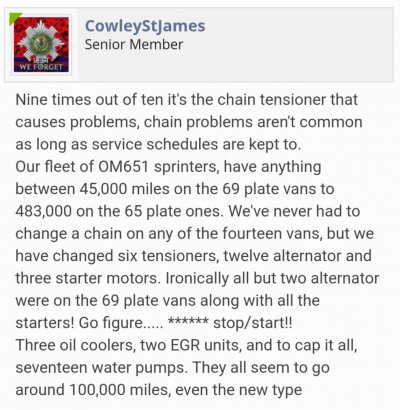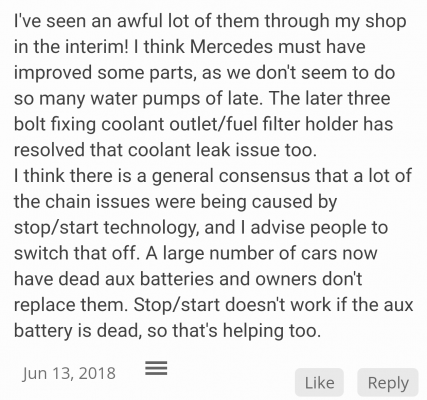Tonygw
MB Enthusiast
My guess is its the sheer number of starts compared to the typical 1-5 starts a day and the initial inertia of the engine cranking has the effect of chain wear. As mentioned we will never know for sure without a complete failure mode analysis. But it is a theory.
Certainly my local indy complains about the system and points some blame to it along with the stop start wearing out engine mounts prematurely. Most people turn it off and find it irritating. I do.. LOL
Certainly my local indy complains about the system and points some blame to it along with the stop start wearing out engine mounts prematurely. Most people turn it off and find it irritating. I do.. LOL



